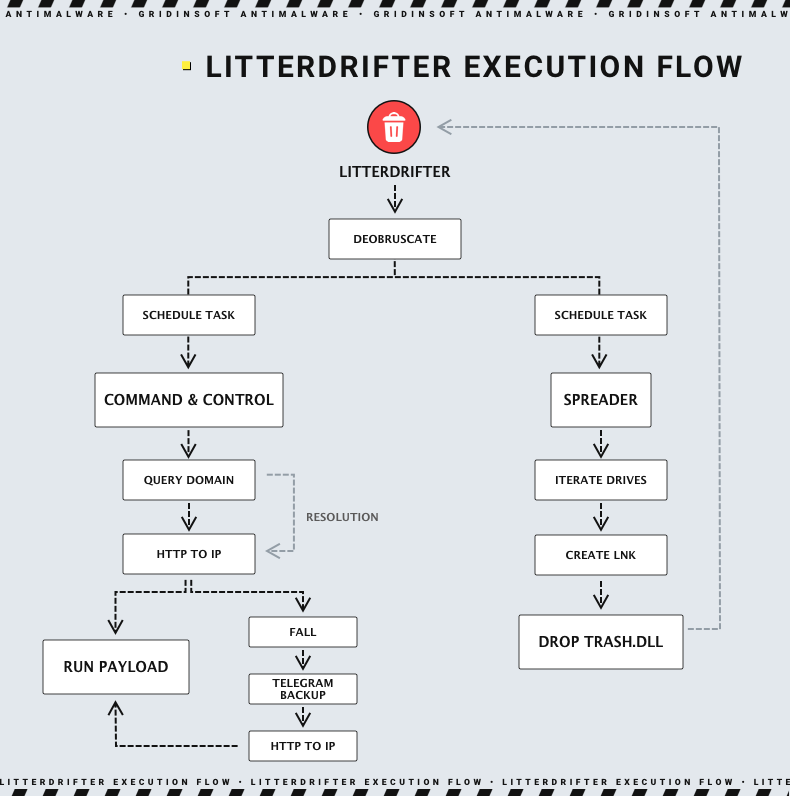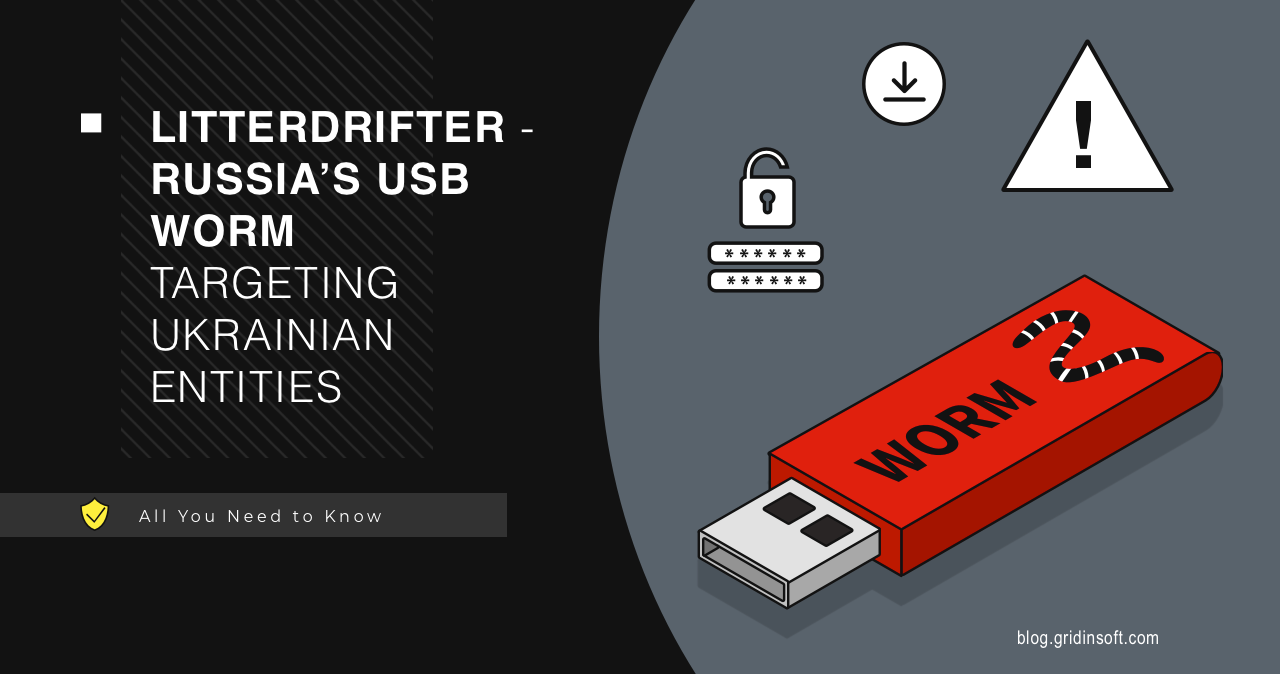LitterDrifter USB worm, intricately linked to the notorious Gamaredon group and originating from Russia. It has set its sights on Ukrainian entities, adding a concerning layer to the already complex world of state-sponsored cyber espionage. This USB worm, believed to be orchestrated by Russian actors, not only showcases the adaptability and innovation of Gamaredon but also raises questions about the potential geopolitical implications of this latest cyber weapon.
Who are Gamaredon?
Gamaredon’s unique profile goes beyond its commitment to espionage goals. The Security Service of Ukraine (SSU) has linked Gamaredon personnel to the Russian Federal Security Service (FSB), adding a geopolitical twist to the group’s activities. The FSB, responsible for counterintelligence, antiterrorism, and military surveillance, sheds light on the strategic and state-sponsored nature of Gamaredon’s operations. Despite the ever-changing landscape of its targets, Gamaredon’s infrastructure exhibits consistent patterns, emphasizing the need for careful scrutiny from cybersecurity experts.
What is LitterDrifter?
One of Gamaredon’s tools – the notorious USB-propagating worm, LitterDrifter. This VBS-written malware showcases Gamaredon’s adaptability and innovation. Despite the old name of malware type, it packs quite a lot of functions much needed in modern cyberattacks.
As a part of the APT’s infrastructure, LitterDrifter introduces a global element to Gamaredon’s operations. Beyond its intended targets in Ukraine, this worm has left potential infections in its wake in countries like the USA, Vietnam, Chile, Poland, Germany, and even Hong Kong. The global reach of LitterDrifter adds to the overall potential of the threat actor in globe-scale cyberattacks.
The key functionality of LitterDrifter worm circulates around being the remote access tool. In other words, it is a backdoor with worm-like self-spreading capabilities. It is a hidden unauthorized access point in a computer system, software, or network that allows accessing the target environment. In cyberattacks, backdoors mostly act as initial access and reconnaissance tools, which then “open the gates” for further malware injection.

LitterDrifter doesn’t just spread automatically over USB drives. It introduces a global element to Gamaredon’s operations. Beyond its intended targets in Ukraine, this worm has left potential infections in its wake in countries like the USA, Vietnam, Chile, Poland, Germany, and even Hong Kong. The global reach of LitterDrifter highlights the broader threat it poses to cybersecurity worldwide.
Gamaredon’s Campaign Against Ukraine
Gamaredon Group has exhibited a sustained and targeted cyber espionage campaign against Ukraine and its institutions. It includes military, non-governmental organizations (NGOs), judiciary, law enforcement, and nonprofit entities since at least 2013. The group, suspected to have ties to Russian cyber espionage efforts, has consistently focused on infiltrating Ukrainian entities. It is evident in its choice of Ukrainian language lures and primary targets within the region.
LitterDrifter emerges as yet another tool employed by the group in its multifaceted cyber operations. As revealed through ongoing monitoring and analysis researchers, Gamaredon has utilized LitterDrifter alongside various other techniques and malware to achieve its objectives. This has further strengthened the group’s status as a advanced persistent threat against Ukrainian and allied interests.
Protection against LitterDrifter
As LitterDrifter reveals its global impact, it prompts a call for a unified and fortified global cybersecurity defense. The worm’s ability to transcend borders underscores the importance of international collaboration in addressing and mitigating cyber threats.
Protecting from threats like LitterDrifter requires a combination of proactive cybersecurity practices and vigilance. Here are some recommendations to enhance your protection against such worms:
- Be cautious when inserting USB drives into your computer, especially if they are from unknown or untrusted sources. Consider using USB drives that have read-only switches to prevent unauthorized writing.
- Regularly back up your important data and store backups in a secure location. In the event of a ransomware attack, having recent backups can help you restore your system without paying the ransom.
- Follow security best practices such as using strong, unique passwords, enabling two-factor authentication, and limiting user privileges. These practices can add layers of protection against various cyber threats.
- Keep yourself informed about the latest cybersecurity threats and vulnerabilities. Being aware of the evolving threat landscape enables you to adapt your security measures accordingly.





